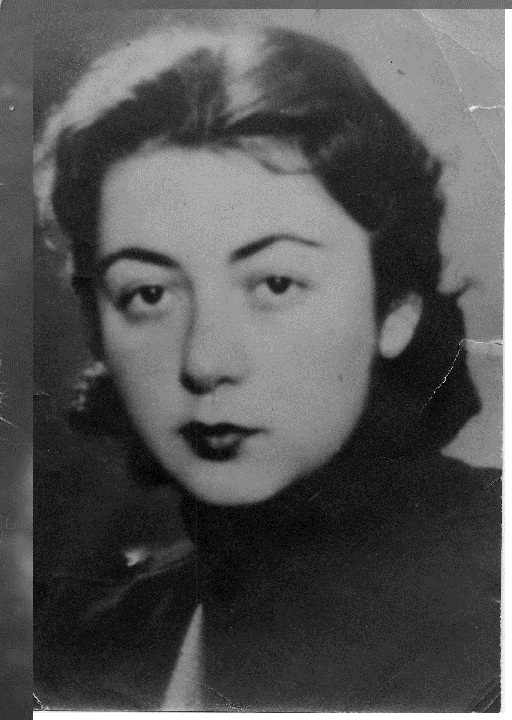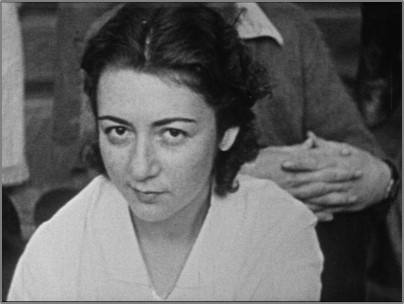
Biography
Levine, May. b. August 19, 1914, NYC; Russian American; AMB; Father Max Levine, Mother Fannie Zapakin, Brother Fred Levine; After graduating from high school, she completed nurse's training through the Lebanon Hospital School of Nursing, 1932-35, Single; Nurse; CP 1937; Received Passport# 414738 on May 17, 1937 which listed her address as 145 East 111the Street, NYC; Sailed May 17, 1937 aboard the Normandie; Arrived in Spain on May 29, 1937; Served with the Republican Medical Services as an operating room nurse at Benicasim and later Mataro; Returned to the US on September 26, 1938 aboard the Normandie; WWII civilian working in the Canal Zone in Panama; In 1946 she moved to Chicago and married fellow veteran Jacob Hartzman on July 20, 1946; In 1957 the family moved to Los Angeles, California; She remained active in progressive causes in both Chicago and Los Angeles; d. May 16, 1996, Los Angeles, California.Siblings: brother Fred Levine.
Sources: SACB; RGASPI Fond 545, Opis 6, Delo 933, ll. 78-84; L-W Tree Ancestry.
Biographical Sketch: May Levine Hartzman was born in New York City in 1914. Her parents were Max and Fannie Levine. Both parents had come to the United States to escape the repression of Czarist Russia. Fannie had immigrated after the failed 1905 revolution. Her father was a tailor and her mother had worked in a factory. But unemployment problems led to their trying to run various businesses such as newsstands and candy stores. May also had a younger brother, Fred, whom she helped to take care of while her parents were working. When she was a child, May attended a Jewish school sponsored by the International Workers’ Order. People in the IWO were active politically. Before her parents went into business, her mother used to attend union meetings. May’s upbringing was very progressive and she received a good political education. The family was very class conscious and they knew they belonged to the working class.
Spanish Civil War When May graduated from high school, she went to nurse’s training school at Lebanon Hospital in New York. When she graduated in the midst of the depression, there was a lot of unemployment for nurses in 1935. Co-workers fainted from lack of food. The Spanish Civil War started in 1936. Franco, in his attack against the legal Spanish government, was being aided by Hitler and Mussolini. In the U.S., Roosevelt pushed a non-aggression pact. However he was the only one who observed it while the fascists and several American companies were aiding Franco. May saw how things were going in Spain. She read the Daily Worker. She announced to her mother that she was going to Spain. Her mother told her to make up her mind that if she went she was going to stay and help. She applied to the American Medical Bureaus. She left with a group for Spain. There were nurses from New York, Philadelphia, and Chicago. There were doctors from Chicago. They went over on the Normandie and arrived in Le Havre in 1937. They took a train to Paris where they receive some instructions from people there who were directing the groups. They left on buses for the Spanish border and got into Spain. They drove from the border. They made a couple of stops along the way and eventually ended up in Benicasim. In Benicasim, a number of villas, vacation homes belonging to the very wealthy, had been taken over and converted into hospital facilities. They were given names of famous people like Maerich, Gorki, and Marti. One of the villas was used as an operating room. May was the operating room nurse. She assisted Abraham Edelson, a neurosurgeon. Another doctor was Barney Malbin of Chicago. He was an internist and surgeon. There were two nurses from Chicago and a nurses aide from New York who assisted the x-ray technician. A lot of people were transferred from the front to the hospital. She was in Benicasim for about a year. They had quiet days and other days when she thought they would be bombed by planes flying over. On the whole, they were lucky in Benicasim. The local people were very helpful and she formed close friendships with the Spanish people there and in Murcia. The hospitals were like a league of nations because of all the people from different countries. There was one Czech doctor name Kisch who had a brother who was a famous author. Gustav Regler, a German author had stayed there. There were doctors from different parts of Europe. One doctor who was born in Poland but had left there because of persecution had received his medical training in France. May and this doctor spoke Yiddish because he knew French and Polish and she knew English and Spanish. Benicasim had American, German, French, and Czech doctors. All the volunteers were trying to learn Spanish so they could speak with and treat the local people. The hospital was very busy. They did a lot of general surgery even though they had a neurosurgeon. However, they had to be very innovative because of the lack of supplies. May remembered that she had one burn patient for whom they needed to keep the blankets off his leg. They had no cradles to hold up the covers, so May took a cradle from the autoclave they used to sterilize the instruments and put it upside down over his leg. While they were in Benicasim, they were visited by two American congressmen, Bernard and O’Connell. Paul Robeson visited and entertained there. Abe Osheroff, who would later make Dreams and Nightmares, was wounded and was one of her patients. Herb Klein, the American movie producer, made a movie about the war in Spain. May never saw the movie, but her father saw it six times in New York. While she was in Spain, she received parcels from her family and from nurses she had known in the Bronx. Her mother sent chocolate strudel preserved in cognac. She fed this to Al Prago, an American soldier who had jaundice. The nurses sent peanut butter. Her mother’s parcels also included instant coffee. The primary food they had was garbanzos, lentils, and burros, very tough burros. They made coffee from lentils (original cup of soup). May vividly recalled a trip to Murcia in which 14 patients needed to be transported because of the seriousness of their wounds. They had a big Mack truck set up as an ambulance. It had 4 stretchers and several benches. May made the trip with two ambulance drivers, Ted Gibbs and Jack Hartzman, whom she would marry several years later. The trip took 14 hours and was very difficult. All the patients were in excruciating pain. May took some minor pain killing pills and also brought some cognac to help the patients fall asleep and get some relief from the pain. One of the patients was an American with a very bad wound in his back. She did not think that he would survive, but several years later he greeted her warmly at a reunion of the Veterans of the Abraham Lincoln Brigade in New York. When things were going bad for the loyalist army, the International Brigaders were taken to Barcelona by truck. They stayed there for awhile until they were sent to a hospital in Mataro. It was under the command of a Czech, German, and an American. They were there for about three months before they were repatriated via Paris. The American Medical Bureau made arrangements for their return to the United States. The American Medical Bureau informed the families so she was greeted by friends and family when the Normandie docked in New York. They had a party at her home where everyone wanted to know about Spain, whom she had met, what she and the people she was with had done.
After the Civil War After returning to the States, she did some private duty nursing and worked at Bellevue Hospital in New York. During the World War II, she spent some time working in the Canal Zone in Panama. In 1946 she moved to Chicago and married Jack Hartzman whom she had met in Spain. She and Jack were active in progressive causes both in Chicago and later in Los Angeles after they had moved to California. May passed away in May 1996. ~Peter Hartzman
Photographs: May Levine in Spain, RGASPI Fond 545, Opis 6, Delo 933, ll. 80; and in Benicassim, Screen shot from the Cartier-Bresson film.
 c
c